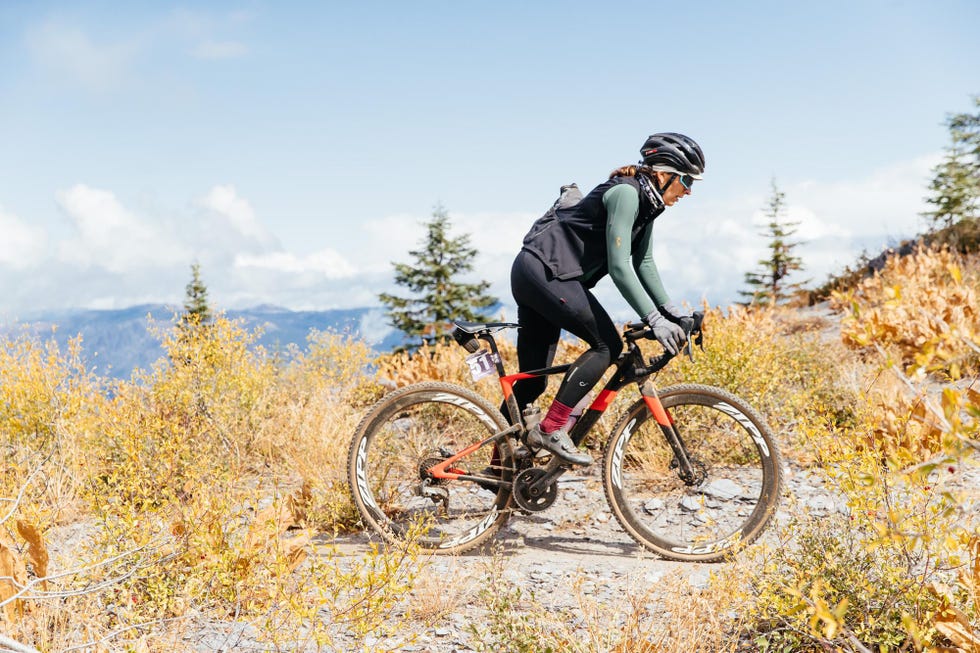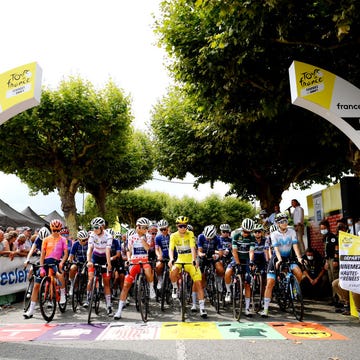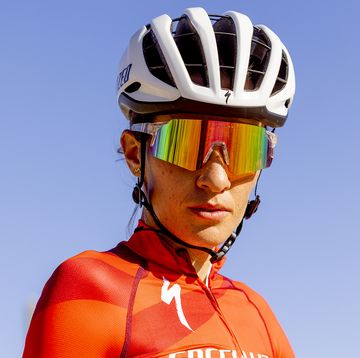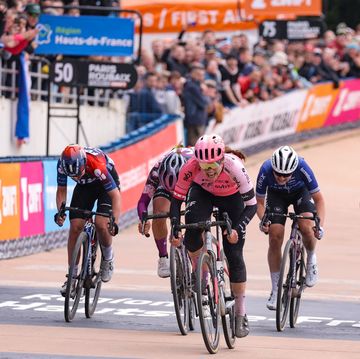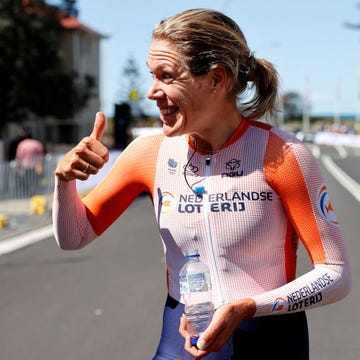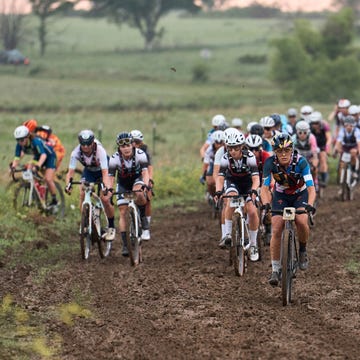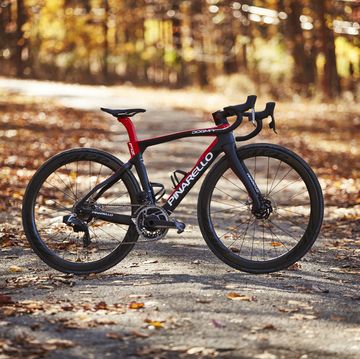Every decision a woman makes during her pregnancy is personal, and that includes whether to continue riding outside. I rode all the way up to delivery, although I changed my routes and didn’t do any extreme mountain biking. I never felt unbalanced or unsafe, and I never really thought twice about it (nor did my doctor, once I assured her I wasn’t doing anything stupid).
A few of my friends also rode through their pregnancies, while others stopped as soon as they started to show. Of course, some only did stationary cycling as soon as the plus sign appeared on the test stick.
Cyclist and mother Laura King decided to continue cycling while pregnant. During her 2019 pregnancy, she told Bicycling: “My cycling routine remains largely unchanged. I’m more discerning about the wheel that I follow, and I consider less trafficked roads and safe terrain.”
The American College of Obstetrics and Gynecologists rules out high-risk activities such as horseback riding and downhill skiing while pregnant, but it doesn’t single out cycling. It does note that off-road riding (which certainly means mountain biking, not riding on a path) can be risky, and that riding an indoor stationary bike is safer than cycling outside because of potential balance issues that may pop up as your belly grows.
“Common sense should rule,” Mary Jane Minkin, M.D., clinical professor of obstetrics, gynecology, and reproductive services at Yale School of Medicine told Bicycling. “If you’re a good rider who has been riding for years and is comfortable on the bike, keep riding.”
Just pay close attention to how you feel once you get out of the first trimester or so. “Some women feel out of balance as their center of gravity changes,” Minkin says. “You don’t want to be on a bike if you feel off balance. It’s the same advice I give skiers. You don’t want to be falling, so use your head.”
That’s always good advice, of course, but it’s sometimes hard to do—especially when you’re wading into the often unpredictable waters of pregnancy. You will be bombarded with advice, whether you want it or not. You will second and third guess your every move. Total strangers will criticize you if they don’t like what you’re doing. So, here’s a guide on how to stay safe and smart if you choose to keep pedaling.
Keep in mind this article is not a substitute for medical advice. Every pregnancy is different, even within the same woman. There are high-risk pregnancies where riding (or any activity) may not be safe, so always consult with your doctor.
Keep It Moderate
When it comes to exercising during pregnancy, including cycling, the general advice is to keep doing what you were doing before you got pregnant. For an Ironman-level triathlete, that could be a two-hour bike ride. For someone just starting out, it might be a 30-minute ride.
During you pregnancy, you should stick with what you know; it’s not the time to try to break any records or push your limits. While doctors no longer set heart-rate limits (years ago, they put the ceiling at 140) but they do recommend that you keep your efforts moderate (i.e., you can still talk while you ride).
According to the American College of Sports Medicine’s Health and Fitness Journal, pregnant women should aim for 150 minutes or more of moderate exercise a week, and that exercise can actually lower the chances of complications during pregnancy. So, even if you don’t get on a bike outside, you should still exercise, unless your doctor tells you differently.
Take It Trimester by Trimester
Remember (again, but it bears repeating): Every pregnancy is different, and you’ll feel different throughout every pregnancy. In general, the first trimester includes a sea of change in hormones, as your body works overtime to establish the pregnancy and create the placenta. You may be plagued with morning sickness, fatigue, and a general “I just don’t feel like myself” feeling. Or you may feel pretty much fine.
Minkin recommends just using your head and also listening to your body and intuition when you are deciding whether to work out and how much to do.
“It can seem counterintuitive during the first trimester to get on the bike when you’re feeling tired and nauseous,” says King, “but I found the fresh air, movement, and routine to help curb my nausea and boost my energy levels for the day.
Usually that early malaise lifts as you go into the second trimester, and you get your energy back. This could be when you feel best on the bike. It might also be when you start to get bigger and your center of gravity changes, so stay in tune with how you feel.
Going into the third trimester can also set off your balance. I carried low and actually felt more stable in the saddle, though. But by eight months in, some of my friends felt so unwieldy that they couldn’t get on the bike again until their babies were born.
Always do what feels right for you and do not compare yourself to other women.
Give Yourself More Time ... and Space
It goes without saying that you’re going to be a little slower as your belly grows, and there’s less room for, oh, deep breathing. There’s a little person growing inside you, taking up some of that extra energy you’d be using for pedaling. Your usual loops will start to take longer, so plan accordingly, and shorten them as needed.
“Though weight gain makes me a bit slower uphill, and I take fewer risks on descents, I’m still able to challenge myself and work hard,” says King.
You’re going to be bigger and heavier physically, which impacts your bike handling. You will also need more time to slow down and to stop. You might find it trickier to corner. Bike paths, open roads, and rail trails can be your best friend during those final months.
Finesse Your Fit
As your bump gets bigger, you might have a harder time bending over the bars and may need a new bike fit to stay comfortable in the saddle. Raising your handlebars put you in a more upright position. Also, you will sit more heavily on the saddle, so you also may want to use a wider saddle like those on comfort bikes, which are designed to support your seat when you’re sitting more straight up.
“Make sure you have a good bike fit and a proper fitting saddle! The pelvic floor undergoes many changes during pregnancy, and with new weight distribution and ligament laxity—due to the hormone relaxin—your fit may need tweaking throughout the nine months,” says King. “Many find a mountain bike to be helpful in the later months for added stability and a more comfortable upright position.”
Likewise, you will likely need to adjust your clothing selection. A larger pair of bib shorts or even a padded chamois liner for your favorite maternity shorts or tights should do the trick.
Pack Fluids and Food
Don’t underestimate your energy needs. I’ll never forget when I went out on a mostly flat 20-mile ride that I’d done a million times before with two of my friends, another of whom was also pregnant. I had eaten a good breakfast and hadn’t thought twice about heading out with them for a lunchtime spin.
About five miles from home, I hit the wall—and I only had two dollars in my pocket. I kept telling myself if I could just make it back to the edge of town, I could stop at the Pizza Hut (and I don’t even like Pizza Hut!) and buy whatever I could get for two dollars. I got a breadstick to get me home. Lesson learned: Pack extra food in your pockets.
It’s even more important to stay well-hydrated when you’re pregnant. Not only do you need more water for your body to perform all the usual functions, as well as those involved with pregnancy, but also it’s easier to overheat when you’re pregnant because your metabolic rate is higher and your body isn’t able to rid itself of heat as easily. Carry twice as much fluid as you normally would, and don’t ride in high heat.
Try the Trainer or Cross-Training
If riding becomes uncomfortable—physically or psychologically—don’t sweat it. You can easily maintain your fitness by hopping on a spin bike or setting yours up on a stationary trainer. In fact, Zwift has a training program specifically for pregnant cyclists called “Baby on Board.”
But if that bores you, swim, hike, or dance. This is your time to take care of yourself as you like.
“While there’s risk in almost any activity, it’s worth considering how cycling can positively affect your mental state. Depression is common in many women during pregnancy and postpartum, so don’t discount the benefits that physical activity can add,” says King.
The same study cited earlier also found that regular moderate exercise during pregnancy can reduce a woman’s chance of getting depression by 67 percent, along with reducing the severity of any symptoms that do occur.



